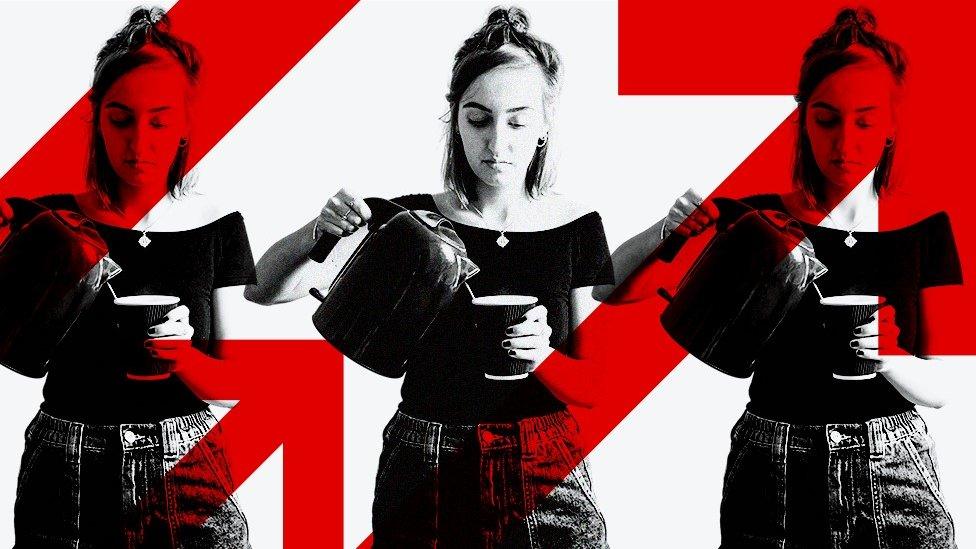Energy saving scheme: What is the Demand Flexibility Service?
- Published

Some people will be able to earn money for cutting back on their electricity usage as part of a scheme that is taking place again later on Friday.
The so-called Demand Flexibility Service, external aims to reduce demand on the country's electricity network during peak times.
National Grid ESO, the network operator, says the scheme does not mean electricity supplies are at risk. It will run on days the network operator decides on from 30 October until March 2024.
What is the energy saving scheme?
The Demand Flexibility Service, to give it its official name, involves energy suppliers paying customers a small bonus if they use less electricity than usual, at a particular time.
For example, people could save energy by opting to use the microwave instead of the oven, or not using the washing machine until later.
It started the scheme last year and ran its first event of this winter earlier this week.
Who can take part?
You must have an electricity smart meter installed and your electricity provider has to offer the scheme.
Most suppliers have signed up and do notify customers on the days they are taking part. You can check whether your supplier is taking part here, external.
If you have not already been invited to take part, you can contact your supplier and ask to sign up to the scheme.
Energy firms have different criteria for who can sign up and exactly how much they pay for saving energy.
When is the Demand Flexibility Service running?
Friday's session runs from 16:30 GMT to 18:00 GMT.
Your supplier will let you know by text or email whenever there is a savings session coming up the following day.
The sessions will usually be between 16:00 and 19:00 GMT, because that is when demand is highest.
How much of a discount can I get?
Individual energy suppliers decide how much customers are paid to cut consumption, and whether the money is taken off bills, credited to accounts, or if available to be withdrawn as cash.
Some suppliers say you have to reach a certain threshold - cutting back by at least 30%, for example. Others say they will pay anyone who makes savings, however small.
Suppliers are being paid between £3 and £6 for every unit of electricity - or kilowatt hour - that is saved, according to National Grid.
Suppliers can choose how much of that to pass on to customers and it can change.
British Gas, for example, has said on Friday it will offer £5 for every kilowatt hour (kWh) saved compared to a household's usual consumption, while Octopus Energy confirmed customers could earn 3,200 account points per kWh saved, which it said was worth £4.
Even if you boil a whole kettle full of water you will only use a fraction of a kilowatt hour. So you would be paid in the region of 20p to 40p for skipping a round of tea depending on how much water you heat, the power of your appliance, and how big a reward your supplier is paying out.
But if you usually run your 2.5kw tumble dryer for an hour, you could be paid much more for delaying the task until later in the evening.
So not using energy-hungry appliances like tumble dryers, washing machines, dishwashers, electric ovens, electric showers and immersion heaters could make a noticeable difference. However, switching off lights, or the TV off standby mode, will earn you very little.
For many people, the reward each time the scheme runs is likely to be just a few pounds. However, National Grid ESO says heavy electricity users could earn as much as £20 by cutting back.
Why is National Grid running this scheme?
The scheme aims to ease pressure on the National Grid by reducing demand for energy.
This week has been very cold and very still. So while people are using more energy to keep warm, the UK has less electricity available from wind power.
National Grid says there is no real risk of blackouts, but it would be better for the environment and in cost terms if demand could be spread instead.
Related topics
- Published28 November 2023

- Published23 November 2023
